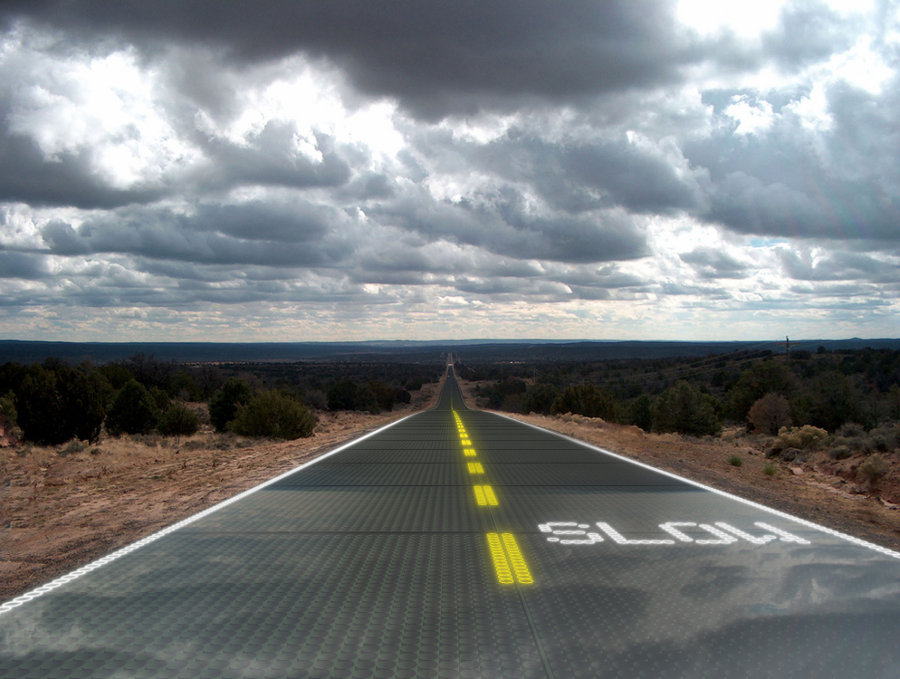March 16, 2012


SANDPOINT, ID— The Solar roadway project has a number of exciting and innovative features to it. Other than being able to generate enough electricity to power the nation, inventor Scott Brusaw’s project is designed to do the most economic and environmental good possible in several other capacities. (Photo by Dan Walden)
[nggallery id=131 template=carousel images=12][imagebrowser id=131]
By Debra Atlas March 16, 2011
SANDPOINT, ID— The Solar roadway project has a number of exciting and innovative features to it. Other than being able to generate enough electricity to power the nation, inventor Scott Brusaw‘s project is designed to do the most economic and environmental good possible in several other capacities.
For example, Brusaw’s team is exploring taking garbage from landfills, mixing it with organic material, and then using it to make the internal support structure of the solar panels. Once this technique is perfected, there will be an almost endless supply of materials to draw from!
This new system would also allow utilities and cable companies to place their fiber optics inside vaults or conduits that they can access easily whenever necessary. It’s simpler and much more cost effective.
“This system pays for itself,” says Brusaw.
It could also transform the landscape as we now know it. It would eliminate the need for power lines, huge electrical transformers, and possibly even most overhead lighting. That’s hard to imagine!
Brusaw is a man with a distinct vision and business philosophy. He plans to keep the company private and keep the manufacturing here in the United States. The factories he’ll build here to produce the solar panels will be staffed only by American workers. The solar panels will be installed and maintained by Americans and will only be sold here in the United States.
He’s also told interested companies in other countries that they must follow his model, and hire workers from their own countries. They’ll install and maintain the panels using workers from their own countries, and they won’t be allowed to export their finished product.
“The economy [and] global warming [are] world-wide problems. This lets everybody manufacture their way out this economic mess, while saving the planet,” he says.
There’s already investors interested in this new technology. The city of Sandpoint, Idaho has applied for a $14 million grant to redo their city sidewalks with the solar panels. The Idaho Transportation Department wants to use the technology in their rest areas and ports of entry.
What if large chains like McDonalds or Walmart were to install EV chargers powered by solar roadways in their parking lots? You could take your electric vehicle on long road trips and simply recharge at rest areas or stores! “This would allow all electric vehicles to become practical,” says Brusaw. At this point, the future of solar roadways all comes down to planning, funding and implementation. After monitoring the soon-to-be constructed parking lot for a few months, then working out the bugs, Brusaw hopes to begin manufacturing by late 2013 or early 2014. [youtube]Ep4L18zOEYI [/youtube]Solar highways could be a reality within the next two years. We at Sierra Club Green Home can only imagine what an exciting adventure that will be!
For related articles, see: Smart Grid: Smart Idea
© 2012 SCGH, LLC.
]]>